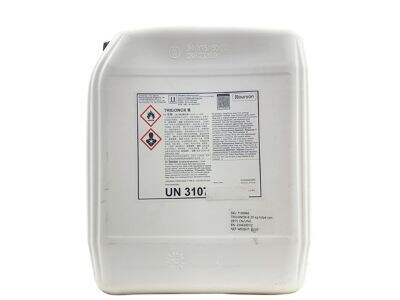What are Organic Peroxides?
Organic peroxides are a particular kind of chemical that is needed for many jobs, such as producing goods and health care. These chemicals are necessary, but they can also be hazardous if people fail to use them properly. The organic peroxide are susceptible to rapid reaction, and could even catch fire if they are not properly stored or handled. It’s critical that workers be trained to handle these chemicals in order to protect themselves and others.
Safety Rules for the Use of Organic Peroxides
Safety procedures should be adhered to while using organic peroxides. Blue Collar Hard Hats workers need training on how to use these chemicals safely. Equally important are safe spaces for storing and handling them. Relying on modern technology like leak or spill detection can prevent disasters and keep everyone safe.
Risk minimization of the use of organic peroxides
Using organic peroxides comes with risks, but workers can be kept more safe with safety measures. One way to do this is by regularly inspecting your home for potential hazards and correcting them before they become a problem. Carefulness and an effort to avoid accidents can be shared with all to promote safer workplace conditions.
New Organic Peroxide Safety Guidelines
With improved technology, additional safety procedures have been developed for organic peroxides. For example, there are new kinds of packages that are designed to be heat and abuse resistant, which can prevent leaks during transport and storage. Enhanced monitoring applications can provide real time status of organic dibenzoyl peroxide and actionable response in emergencies. By staying on top of the newest safety developments, companies can help ensure that workers and the environment are better protected.
Safety Tips on Using Organic Peroxides
It can be difficult to work safely with organic peroxides, but best practices can make a difference. Clearly label containers, keep organic dtbp peroxide in a cool, well-ventilated area, and wear PPE while working with these chemicals. Equally important is that the emergency plans be in place and workers receive regular training so they are up-to-date on potential hazards.
 EN
EN
 AR
AR
 HR
HR
 CS
CS
 DA
DA
 NL
NL
 FI
FI
 FR
FR
 DE
DE
 IT
IT
 JA
JA
 KO
KO
 NO
NO
 PL
PL
 PT
PT
 RO
RO
 RU
RU
 ES
ES
 SV
SV
 TL
TL
 ID
ID
 UK
UK
 VI
VI
 TH
TH
 TR
TR
 FA
FA
 AF
AF
 MS
MS
 GA
GA
 BE
BE
 HY
HY
 AZ
AZ
 KA
KA
 LO
LO
 MN
MN
 MY
MY
 KK
KK
 SU
SU
 TG
TG
 UZ
UZ


